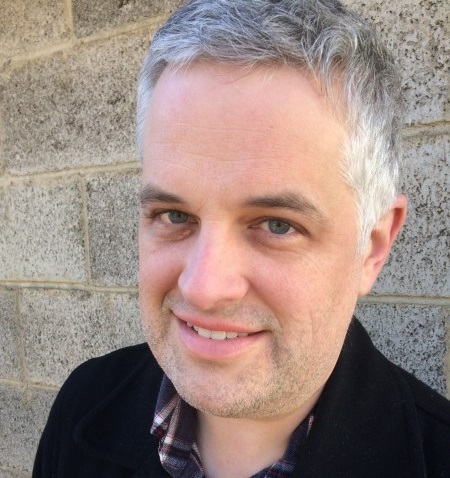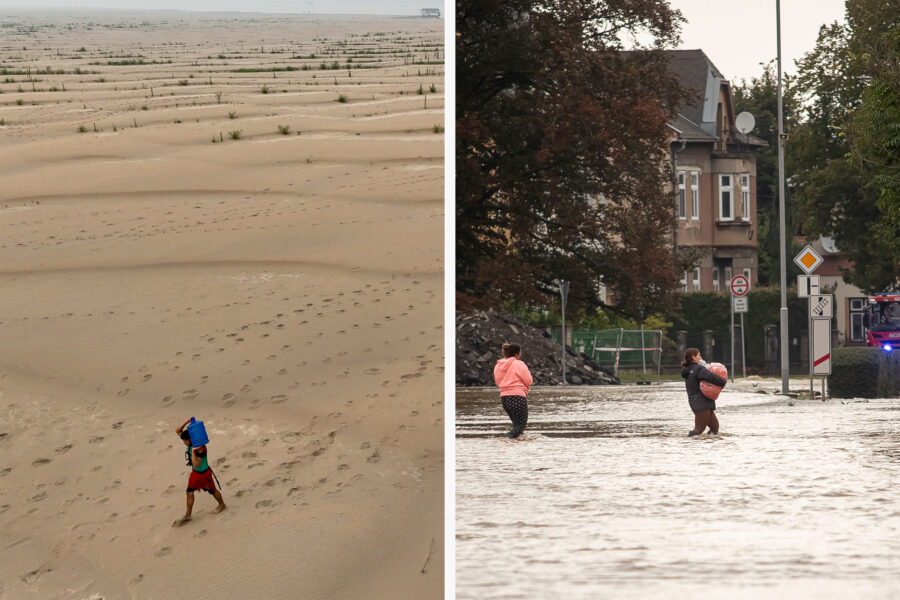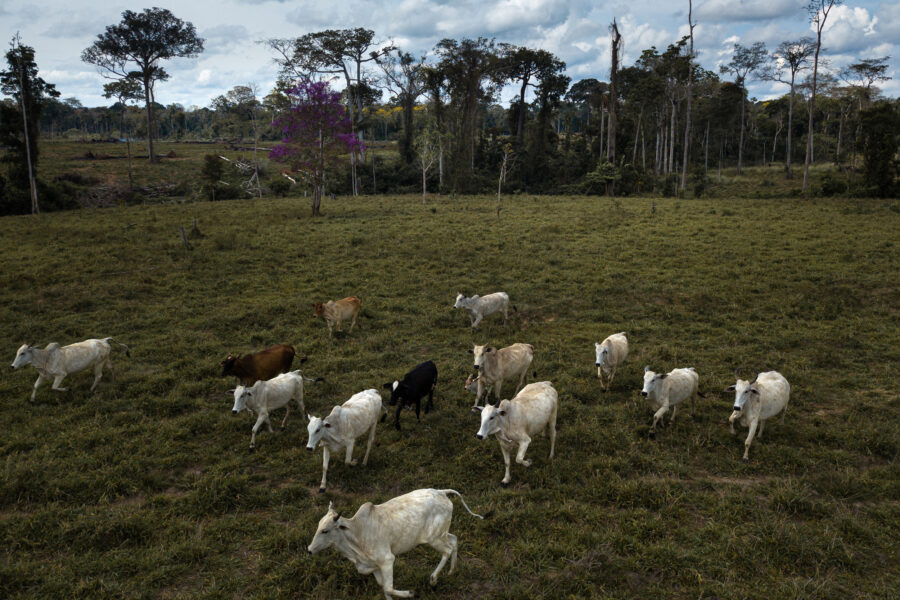The Barely Recognizable J.D. Vance as Trump’s Vice Presidential Running Mate
From our collaborating partner “Living on Earth,” public radio’s environmental news magazine, an interview by host Steve Curwood with Dan Gearino, a staff writer at Inside Climate News based in Columbus, Ohio.
The 2024 presidential election has already been tumultuous, but in some respects it’s just beginning. And at the Republican National Convention in Milwaukee, Wisconsin, the party coalesced around presidential nominee Donald Trump, his chosen running mate, U.S. Sen. J.D. Vance of Ohio, and the GOP platform. U.S. Rep. Michael Waltz from Florida, who co-chaired the party platform committee, spoke on the first night.
MICHAEL WALTZ: We will unleash American energy and flood the world with clean, cheap American oil and gas—Drill Baby Drill!
STEVE CURWOOD: And in his nomination acceptance speech, J.D. Vance put the focus squarely on American energy and manufacturing jobs.
J.D. VANCE: My fellow Americans, here on this stage and watching at home, this moment is not about me. It’s about all of us, and it’s about who we’re fighting for. It’s about the auto worker in Michigan wondering why out-of-touch politicians are destroying their jobs. It’s about the factory worker in Wisconsin who makes things with their hands and is proud of American craftsmanship. It’s about the energy worker in Pennsylvania and Ohio who doesn’t understand why Joe Biden is willing to buy energy from tin-pot dictators from across the world when he can buy it from his own citizens right here in our own country.
Explore the latest news about what’s at stake for the climate during this election season.
CURWOOD: And of course, the senator from Ohio always brought it back to the former president.
VANCE: A leader who rejects Joe Biden and Kamala Harris’ “Green New Scam,” and fights to bring back our great American factories, we need President Donald J. Trump.
[LIVING ON EARTH MANAGING PRODUCER] JENNI DOERING: Steve, as you know with just two years in the U.S. Senate, J.D. Vance doesn’t have much of a record in politics. But neither did Donald Trump when he came down the escalator of Trump Tower in 2015 to announce his candidacy.
CURWOOD: Right, so joining us now to help unpack what we do know about J.D. Vance when it comes to climate and environment is Dan Gearino, an Inside Climate News reporter based in Columbus, Ohio. Hey Dan, welcome back to Living on Earth!
DAN GEARINO: Great to be here.
CURWOOD: So, Dan, how would you describe the J.D. Vance we’ve seen in recent days?
GEARINO: The J.D. Vance we’ve seen in recent days is this version of him that came into life with his Senate campaign, which is just not that long ago, and is a lot different from the J.D. Vance we saw just a couple years before that, when he was this author of a bestselling memoir who had a lot more of a moderate Republican image. One of the most interesting things about J.D. Vance is the extent of the transformation of the way he talks about issues and even specific stances on some issues related to energy and the environment.
DOERING: Now, in his speech, Vance highlighted his roots in Middletown, Ohio. What’s Middletown like?
GEARINO: Middletown has a steel plant that’s been around for a long time and has long been the core of the local economy, but it used to have a lot more industry. Middletown was probably a really nice place to live circa 1950, maybe a little bit later than that. And like so many cities of its size, it lost a lot of industry over the 1980s and 1990s. And it had a lot of poverty. It is a town that has struggled a lot and so much of what is a through line in J.D. Vance, his memoir, and a lot of what seems to have helped to form his worldview is some of the factors that led to Middletown falling from its position of economic prosperity to one of real economic desperation.
CURWOOD: You know, Dan, it may be apocryphal, but supposedly CBS Radio picked Middletown, Ohio, as the, quote, “American Voice” as they started to broadcast around the country. And of course, the book he wrote is called “Hillbilly Elegy.” So how much of a hillbilly was he there in Middletown? I guess, being raised by his grandmother, Mamaw. How does that background help Mr. Trump? Oh, and by the way, unlike probably your typical hillbilly he married the daughter of Indian immigrants.

GEARINO: This question you ask gets kind of to the core of his identity. And this is one of the most controversial aspects of how people look at and will at times criticize J.D. Vance. So, first of all, Middletown is not in Appalachia. J.D. Vance’s family history is definitely in Appalachia, with family in Kentucky, but he grew up in a part of the industrial Midwest that I don’t think there’s any map of Appalachia that would include Middletown. And the idea of the term “hillbilly” is one that is fraught for sure.
There are a lot of people who are from Appalachia, who look at the way he talks about Appalachia, from his background not being from Appalachia, and they really didn’t like it. And this is something you would see across the political spectrum, but particularly Democrats and people in the middle of the road politically. They would basically say this is kind of a caricature of our region that is being spoon-fed to people who are not from the region and don’t necessarily recognize it. So yeah, you could spend all day dissecting his identity, his kind of family history and identity. It clearly forms a lot of how he views the world. He talks about Appalachia and talks about this place that he’s from.
CURWOOD: And he certainly doesn’t sound like Eastern Kentucky.
GEARINO: No.
DOERING: Now, as you mentioned, Dan, there’s been a lot of talk about how J.D. Vance has gone through quite a transformation on Trump over the years. I mean, he once called Trump “America’s Hitler” and described him as really dangerous. But now he’s of course a fierce supporter and defender of the former president. What changed?
GEARINO: It will be interesting, in long hindsight, at some point in the future, to be able to figure out the precise point that J.D. Vance seemed to just turn on a dime in terms of the way he talks about things and his whole aura as a public figure. But from our vantage point right now, I think it’s pretty clear it’s that Senate race, which he ultimately won because he had Trump’s endorsement.
It was a very crowded race. He was not leading in the polling. By adopting a Trump-like tone and by very skillfully getting Trump’s endorsement in a field in which there were a bunch of other candidates that wanted Trump’s endorsement, desperately wanted it, he got it. And what he did was take the persona that he had before—public intellectual, this guy who wrote about Appalachia with … the distance of almost an academic, a real smart guy, a guy who came from finance, a guy who went to Yale Law School, who had a part-time faculty position at Ohio State briefly after he moved back to Ohio. That person was out the door.
You didn’t hear from him anymore. Instead, you heard this kind of very aggressive way of talking about immigrants. This real lack of nuance when so much of what defined him before was a whole bunch of nuance. I mean, one of the reasons that Hillbilly Elegy was widely read and widely liked, I would say across the political spectrum in a lot of ways—there were certainly detractors, but it was something that got a lot of respect from a lot of quarters—was that he did seem to possess some nuance when talking about what ails the industrial Midwest and talking about the solutions.
And it was this straight up-partisan view that changed dramatically. And it was around the time that he was a Senate candidate, or about to become Senate candidate, you also can look at when he got the beard. You look at the videos of the public intellectual phase of J.D. Vance’s life after returning to Ohio: When you see him without the beard, you’re probably gonna get the … nuance, the caveats, just a really different guy. A lot of times if you’re just watching video, and when you see the beard, you know, you’re gonna get the kind of the post-Trump J.D. Vance. And it’s just striking.
CURWOOD: Yeah, and so let’s play a clip of J.D. Vance speaking back in 2020 at Ohio State University. There was an event on the American Dream before he aligned himself so closely with Trump.
VANCE: We, of course, have a climate problem in our society, one largely caused now by unrestrained emissions in China. Part of the reason we have that problem is because we’re not generating energy much cleaner than we used to 30 or 40 years ago. And in fact, the biggest improvement in emissions is solar energy, which can provide a substantial amount of our power but can’t provide anything like 50 percent of our power, definitely not 100 percent of our power, and through sort of our increasing reliance on natural gas, which, of course, is an improvement over dirtier forms of power, but isn’t exactly the sort of thing that’s going to take us to a clean energy future.
CURWOOD: What’s your takeaway from the way he was talking about energy and climate back then? It certainly wasn’t, “Drill, baby, drill.”
GEARINO: No, and it wasn’t especially partisan. I would say that the way he was talking about these issues back then were like somebody who has just a basic understanding of the facts about climate change, and about the global energy economy. You could almost say that like a high schooler or even a middle schooler who has basic understanding, this is a lot of common-sense stuff.
And what’s striking is how, in hindsight, it was notable that he was making statements that are verifiable facts. It’s like, oh, my goodness, what a contrast, when in fact, what he was saying was very much a mainstream view. It was even, within the Republican Party, you could be an elected Republican and say exactly what he said, and you wouldn’t necessarily get into trouble. It’s a different person than the one we’ve got now or at least a fundamentally different way of talking about these things. The guy we hear in that clip is someone who is barely recognizable as the guy that we heard speak at the Republican Convention.
DOERING: So Dan, as we heard, at the top of this segment, Vance mentioned, quote, “The auto worker in Michigan wondering why out of touch politicians are destroying their jobs.” Now, that sounded like it must be a reference to the electric vehicle manufacturing incentives in the inflation Reduction Act, but the Biden administration has been creating jobs through electric vehicle incentives. So why is Vance adopting this rhetoric?
GEARINO: There is this sense in parts of the Republican Party that this is something that will catch on with voters or has caught on with voters. It’s also very much in line with what fossil fuel industries would like to see; they want to see this demonization of electric vehicles. And it’s almost completely contrary to the facts of what’s actually happening. The shift to electric vehicles is something that would lead to a net gain in … auto jobs. And in union jobs, definitely in Ohio. You can look at billions of dollars of investment in Ohio, you can look at investment in Michigan.
What the shift to EVs does is, it creates a lot of anxiety for auto workers, because these jobs are changing. It creates fertile ground if you want to sow discord and make workers skeptical about this shift toward cleaner transportation. But it’s just striking how contrary that is to the idea of making the U.S. competitive in the auto economy that we’re gonna have 10 years from now, 20 years from now, 30 years from now. It’s almost like a strategy that has an expiration date of the November election. And maybe that’s all that’s needed. But it’s one of those things when you think back to the public intellectual J.D. Vance of a couple years ago, he would debate himself right here and say, “Come on, let’s be real here.” So yeah, that is something that I also found striking when I heard that.
CURWOOD: Well, thank you so much, Dan, for taking this time with us today and sharing your insights. J.D. Vance, from your own state there in Ohio. Dan Gearino is an Inside Climate News reporter based in Columbus, Ohio. We’ll talk to you again soon sometime in the future, I suspect.
GEARINO: All right. Thank you very much.
About This Story
Perhaps you noticed: This story, like all the news we publish, is free to read. That’s because Inside Climate News is a 501c3 nonprofit organization. We do not charge a subscription fee, lock our news behind a paywall, or clutter our website with ads. We make our news on climate and the environment freely available to you and anyone who wants it.
That’s not all. We also share our news for free with scores of other media organizations around the country. Many of them can’t afford to do environmental journalism of their own. We’ve built bureaus from coast to coast to report local stories, collaborate with local newsrooms and co-publish articles so that this vital work is shared as widely as possible.
Two of us launched ICN in 2007. Six years later we earned a Pulitzer Prize for National Reporting, and now we run the oldest and largest dedicated climate newsroom in the nation. We tell the story in all its complexity. We hold polluters accountable. We expose environmental injustice. We debunk misinformation. We scrutinize solutions and inspire action.
Donations from readers like you fund every aspect of what we do. If you don’t already, will you support our ongoing work, our reporting on the biggest crisis facing our planet, and help us reach even more readers in more places?
Please take a moment to make a tax-deductible donation. Every one of them makes a difference.
Thank you,
David Sassoon
Founder and Publisher
Vernon Loeb
Executive Editor
Share this article
Disclaimer: The copyright of this article belongs to the original author. Reposting this article is solely for the purpose of information dissemination and does not constitute any investment advice. If there is any infringement, please contact us immediately. We will make corrections or deletions as necessary. Thank you.








